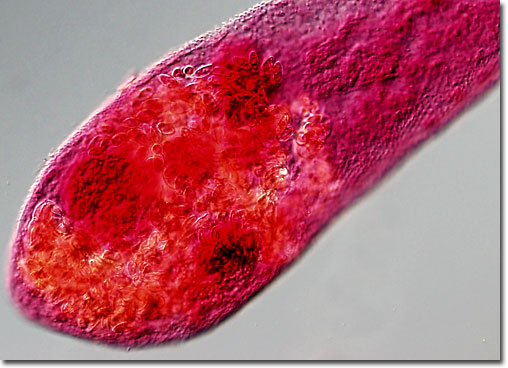|
H. heterophyes must inhabit two intermediate hosts before it is capable of infecting a human, or other definitive host. In order to hatch, eggs of the parasite must first be ingested by a suitable snail. Within the snail, larvae penetrate its tissues and develop through two morphologically distinct generations. The motile larvae that result exit the mollusk host and seek out suitable fish, which they invade to form their mammalian infective stage. Once the infected fish are eaten by a definitive host, they make their final home in the small intestine, developing into sexually mature adults and producing a new generation of embryonated eggs.
|
